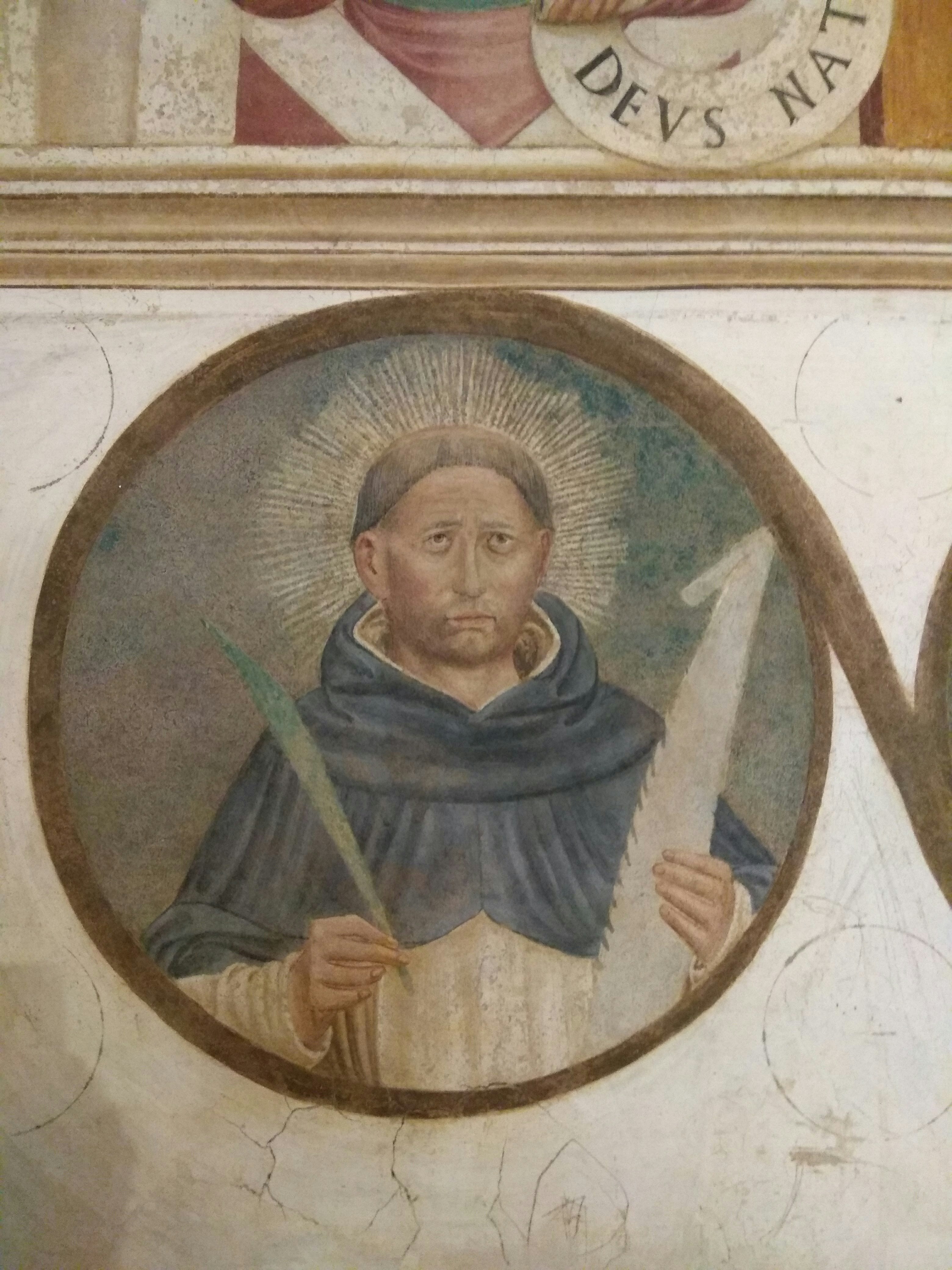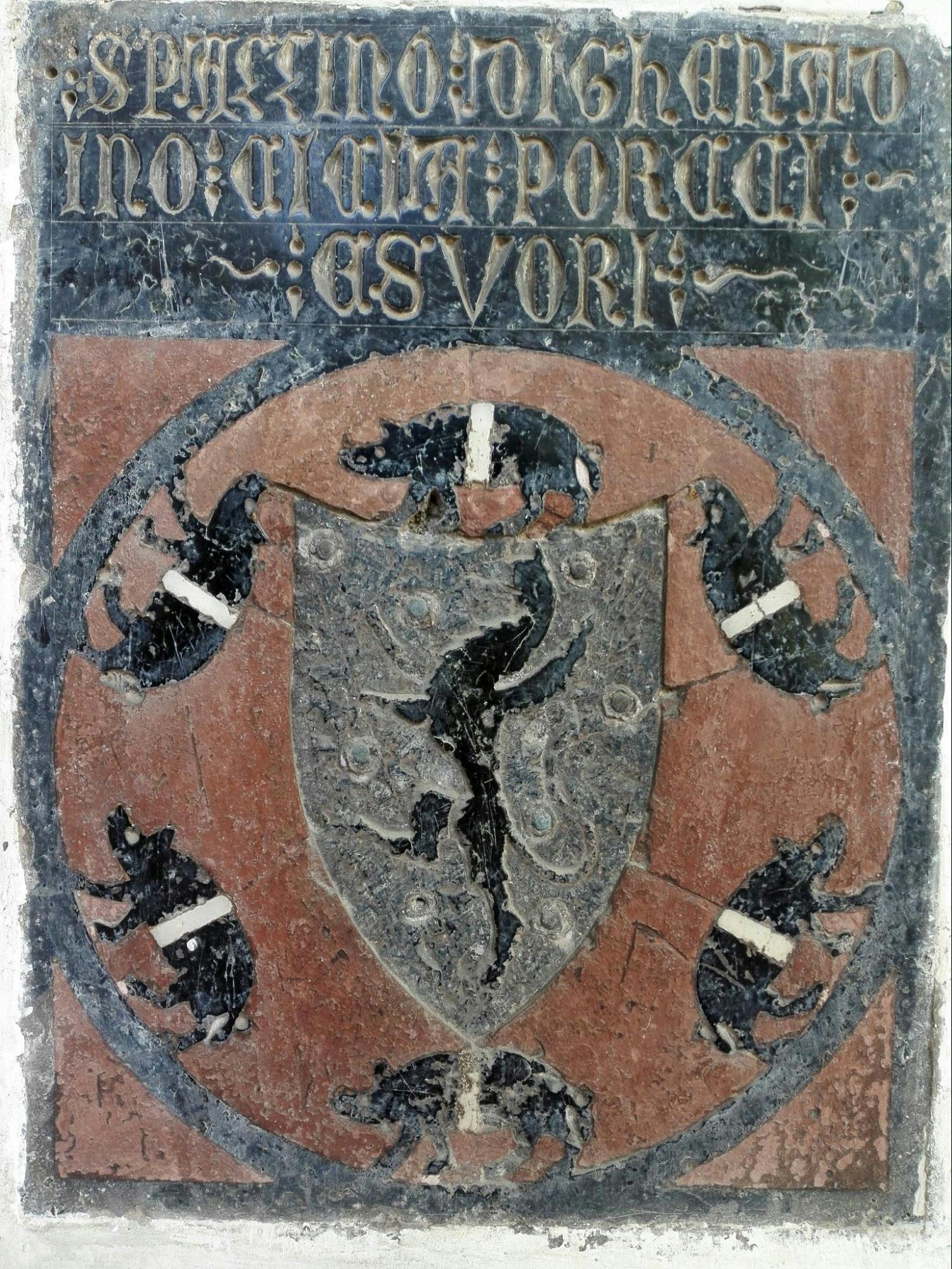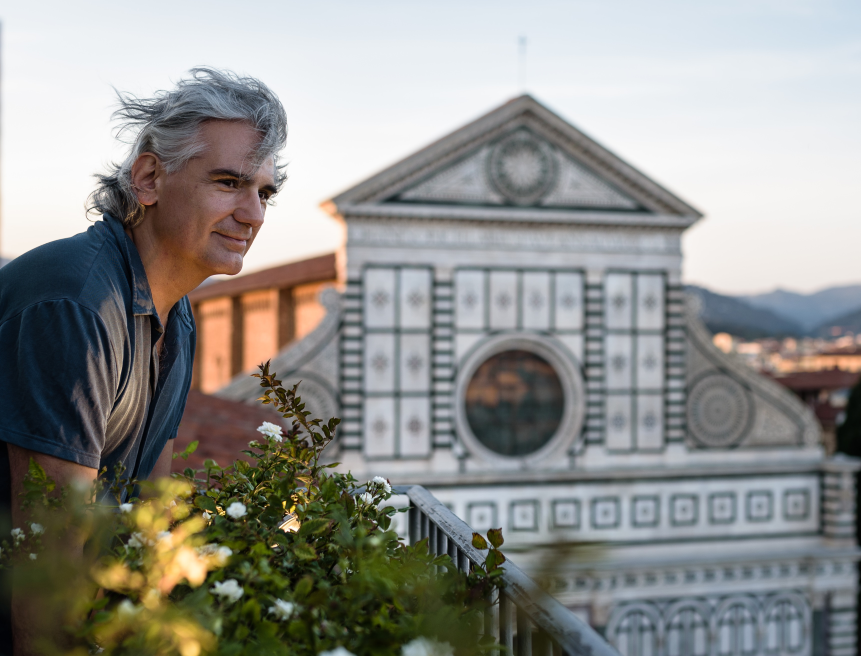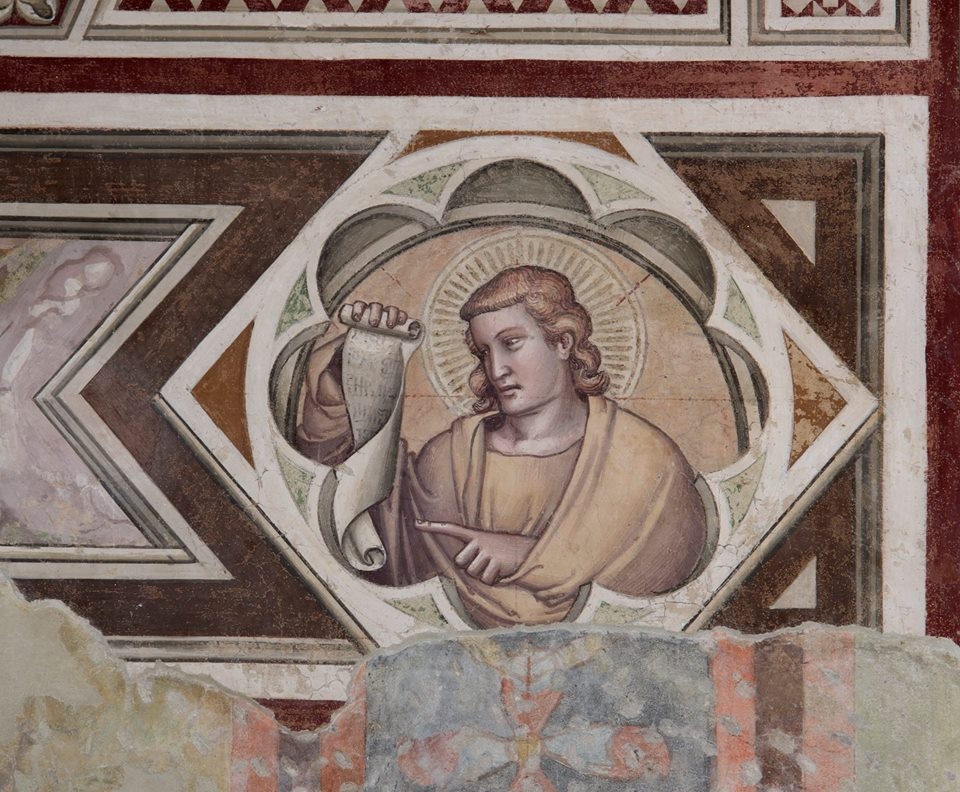By Enrico Bartocci
Buoninsegna de 'Cicciaporci, an illustrious but little known individual who lived in S. Maria Novella, belonging to an important family with a curious name and an amusing "revealing" coat of arms showing a nice garland of Cinta Senese pigs. It is gold with a black griffin and red border filled with the six black pigs with silver straps", as described by the nineteenth-century artist Ceramelli Papiani. We see it in the cloister of Santo Spirito, where the family owned some houses in the facing square. The Cicciaporci had several illustrious members in the Florentine political and religious institutions. Buoninsegna, a Dominican friar, was portrayed between 1570 and 1590 by Bernardino Poccetti in the great cloister of S. Maria Novella, with the palm of martyrdom in the left hand. The cartouche under the portrait reads:
BF BONINSEGNA. FLOREN.
MARTYR. INVICTUS
PRO. CHTO.
ANTIOCHIE. sectus
Anno: MCCLX
Giuseppe Maria Brocchi in his " Vite De 'Santi E Beati Fiorentini" (Albizzini, 1752) dedicated an entire chapter to him, calling him " DOMENICANO, PATRIARCA D'ANTIOCHIA, AND MARTYR". He tells us that, according to the documents preserved in the archive of S. Maria Novella ( “Cronica fratrum Sancte Marie Novelle de Florentia" ) was born around 1200 and received the vows from the Blessed John of Salerno , a disciple of St. Dominic Guzman who arrived in Florence with 12 confreres in 1221 he founded the church and the convent of S. Maria Novella. He worked hard in his studies, becoming a reader in Theology and in 1233 he played an important role in mediation in the difficult peace between the Florentines and Pisa. He then embarked on a ship for Egypt "inspired by God to procure the conversion of the unbelievers" and reached Antioch, where "he reduced to the true faith most of those inhabitants" and for this he was appointed by the Pope "Antiochian Patriarch ". But in June 1270, following the reconquest of Antioch by the mamlûk , all the Dominicans of Antioch were executed. In Buoninsegna Cicciaporci the same atrocious torture was reserved which, according to the apocryphal gospels was inflicted on the prophet Isaiah:"... having been ordered that the same (Buoninsegna, ed) was sawed alive by the middle of the head in the public square, which was barbarically executed on the 8th of June of the year MCCLXX". For this reason, in the fresco of the Poccetti is portrayed with the palm of martyrdom in his left hand, in the cartouche he is called "sectus" (divided, sawn) and refers to his position as Patriarch.
In the 15th century the Dominican Archbishop S. Antonino Pierozzi in his writings placed Buoninsegna among the most authoritative and illustrious saints of the Dominican order. In fact, we find his portrait in the chapter hall of the convent of S. Marco, of which Pierozzi was Prior, among the 17 faces of illustrious Dominicans portrayed in the frieze at the base of the Crucifixion of Beato Angelico: it is the first on the left, with the palm in one hand and the instrument of his martyrdom, a huge saw, in other. It is possible that Bernardino Poccetti was inspired by this portrait to paint the one in S. Maria Novella. In fact, during the same period, around the end of the 16th century, he frescoed several lunettes of the cloister of S. Antonino in the convent of S. Marco, on which the chapter hall stands. He will therefore certainly have had the opportunity to see the fresco by Beato Angelico and the portrait of Buoninsegna.

Portrait of Cicciaporci, Convent of San Marco

Coat of arms of the Cicciaporci, cloister of Santo Spirito, Florence
Photo: Enrico Bartocci
About the author: Enrico Bartocci
Born 1966 in Florence and raised here, in a family fatally infected by the disease of art and the ancient, in the shadows of the walls of Arnolfo, between Palazzo Pitti, Boboli and the avenue of the hills.
Architect, computer scientist, licensed tour guide, amateur photographer. The activity of tourist guide, which tries to carry out privileging unusual itineraries in and around Florence, supports writing articles on historical and artistic subjects in Florence, published mainly in the online magazine "Florencecity".

_________________________________________________________
This story is part of our "Call for Papers" initiative - a Story for Santa Maria Novella.
Are you fascinated by the great history of Santa Maria Novella? Do you want to tell to a large audience about a particular anecdote related to one of the most important religious complexes in the city? Have you studied an aspect or a historical-artistic theme that can be interesting to share? It's time to share your contribution with us!
Send us your proposals in English (the italian translation is also very appreciated) with a text of maximum two folders * to media@smn.it
The best works will be published on our website www.smn.it and will be the subject of in-depth studies, conferences and / or taken into consideration for our editorial series "Quaderni di Santa Maria Novella" of particular scientific importance.
We are lloking forward to see your stories!
* A folder corresponds to a "page" consisting of up to 1800 characters
